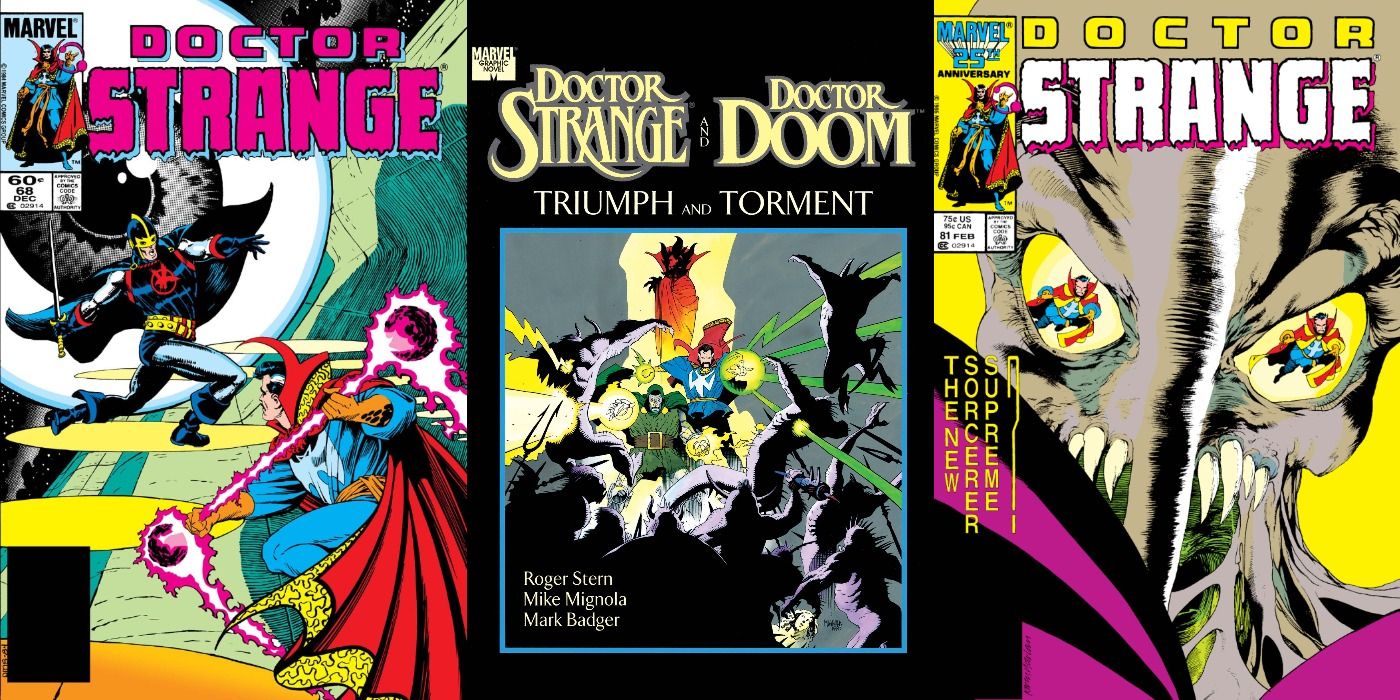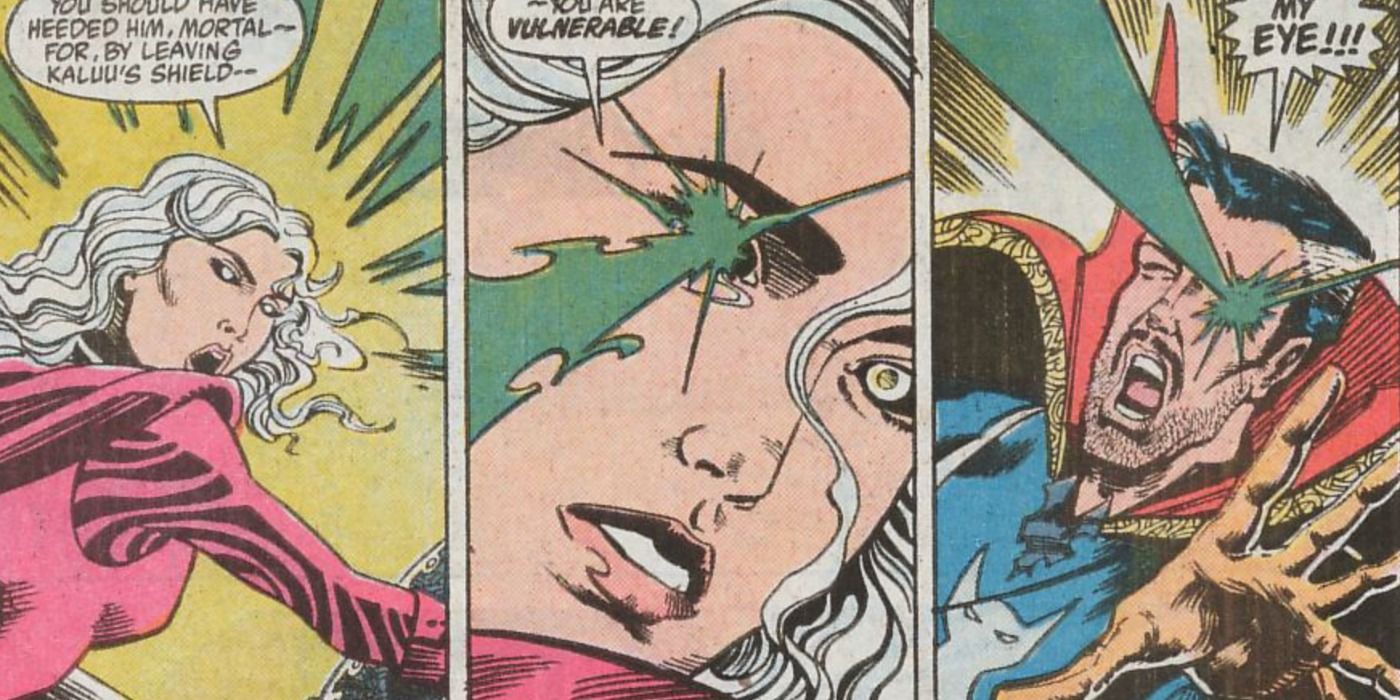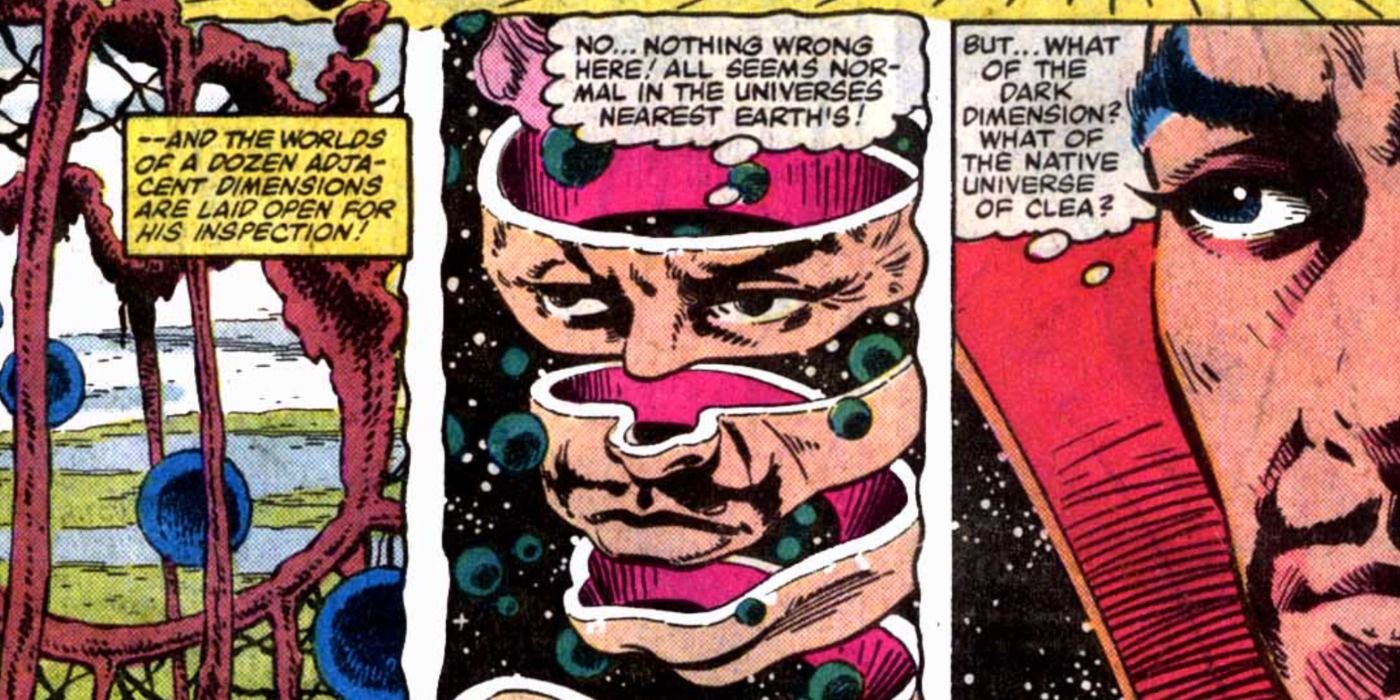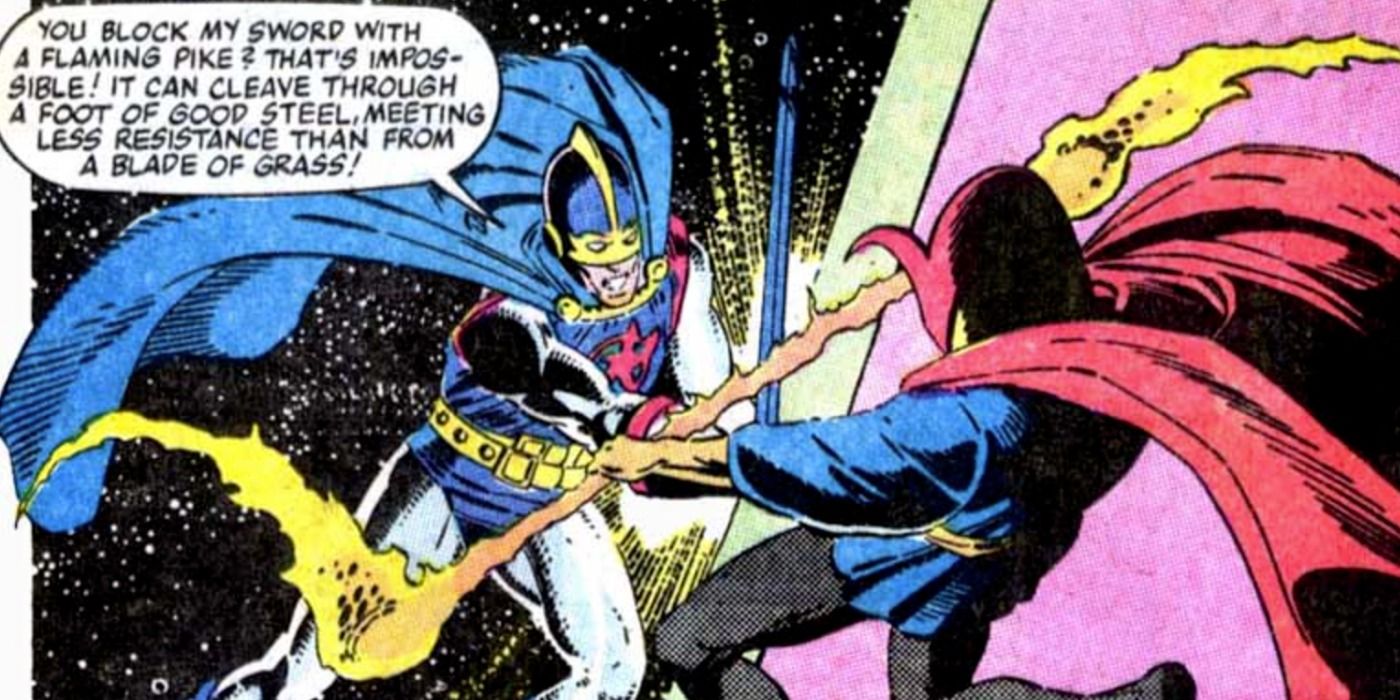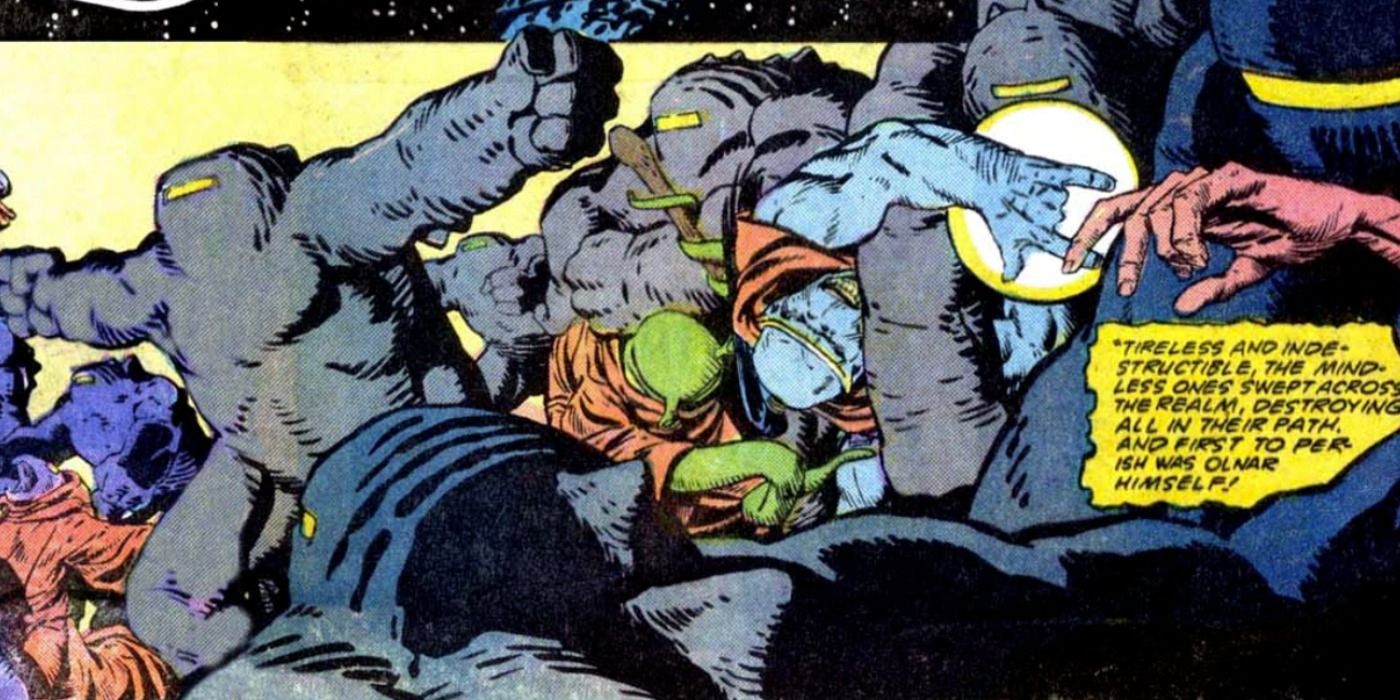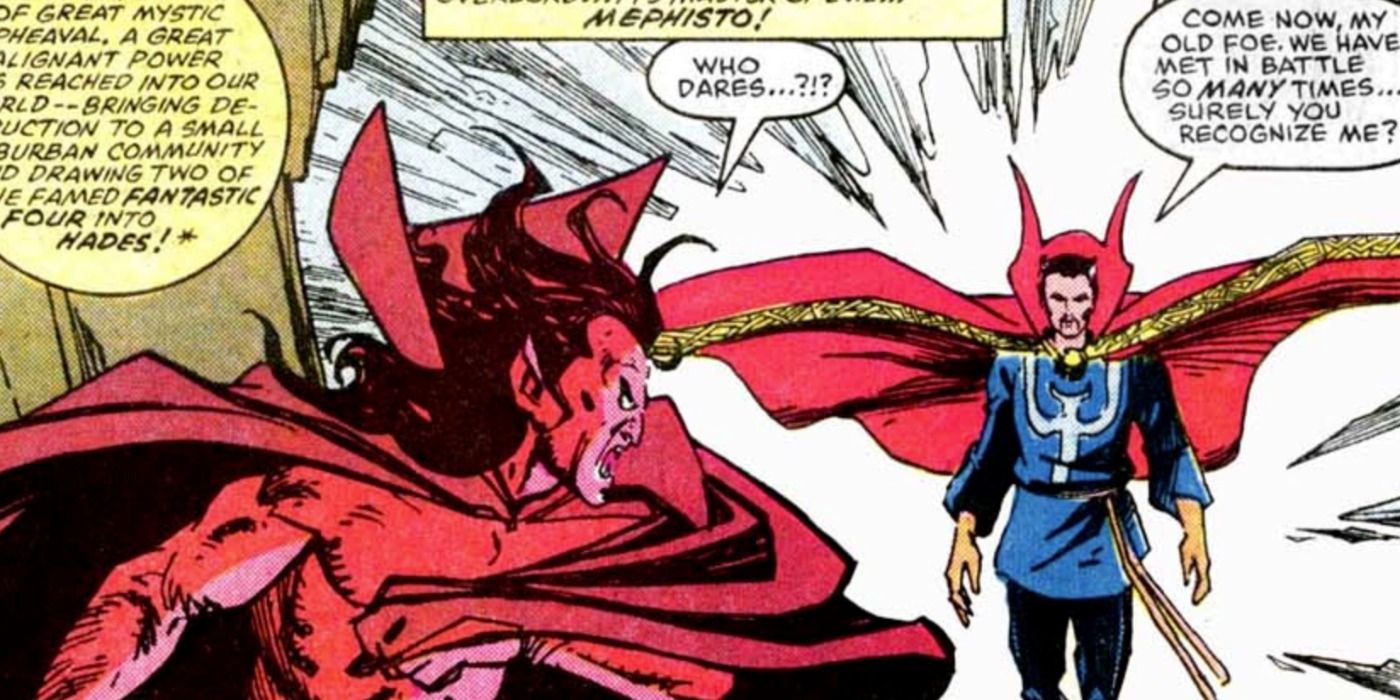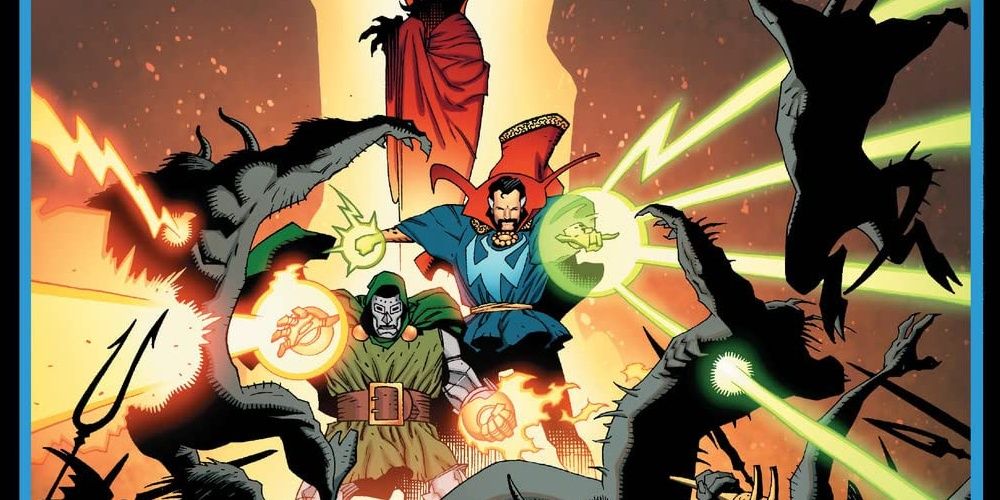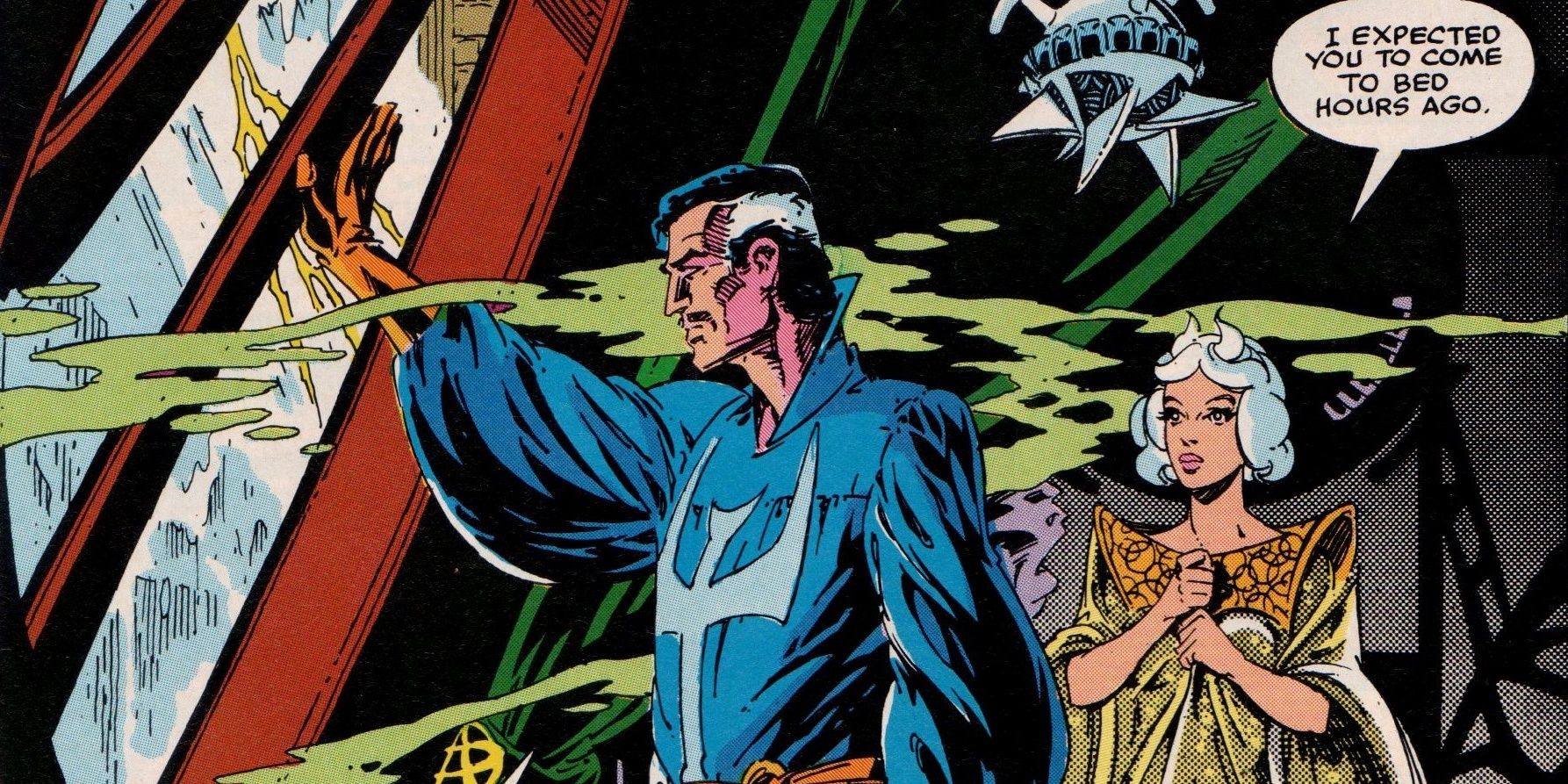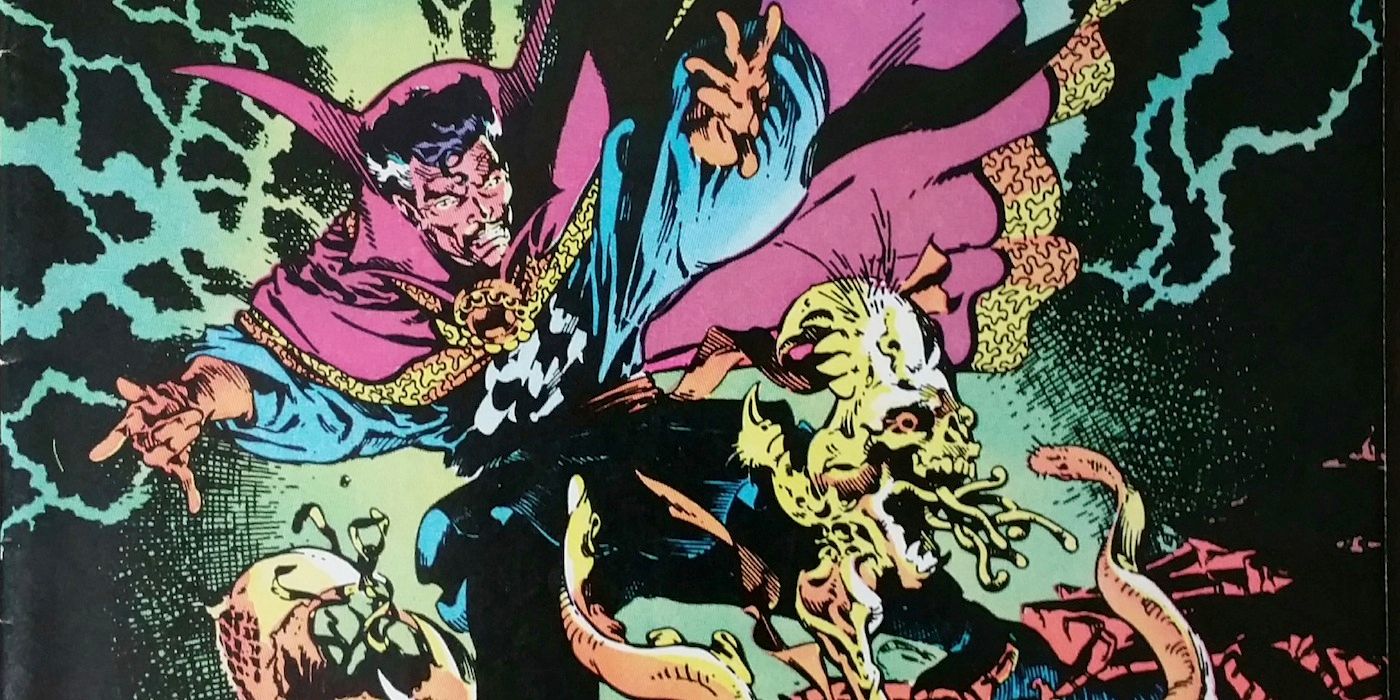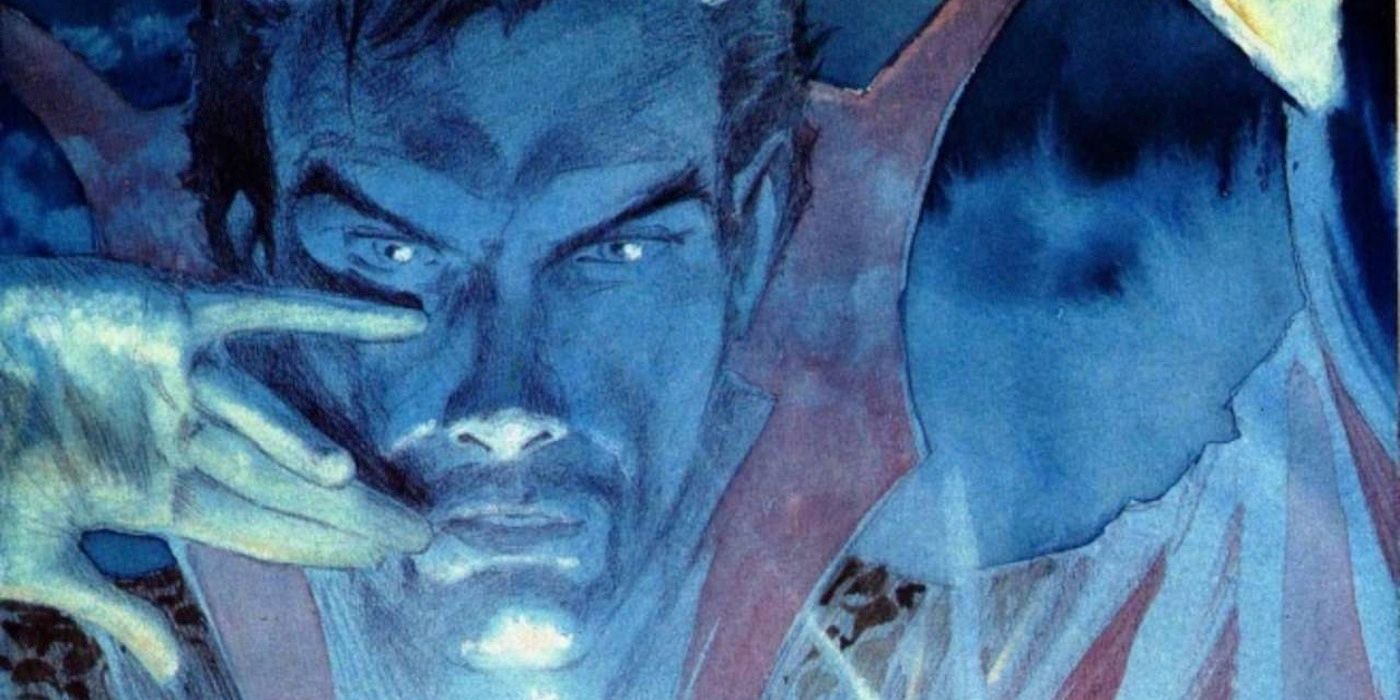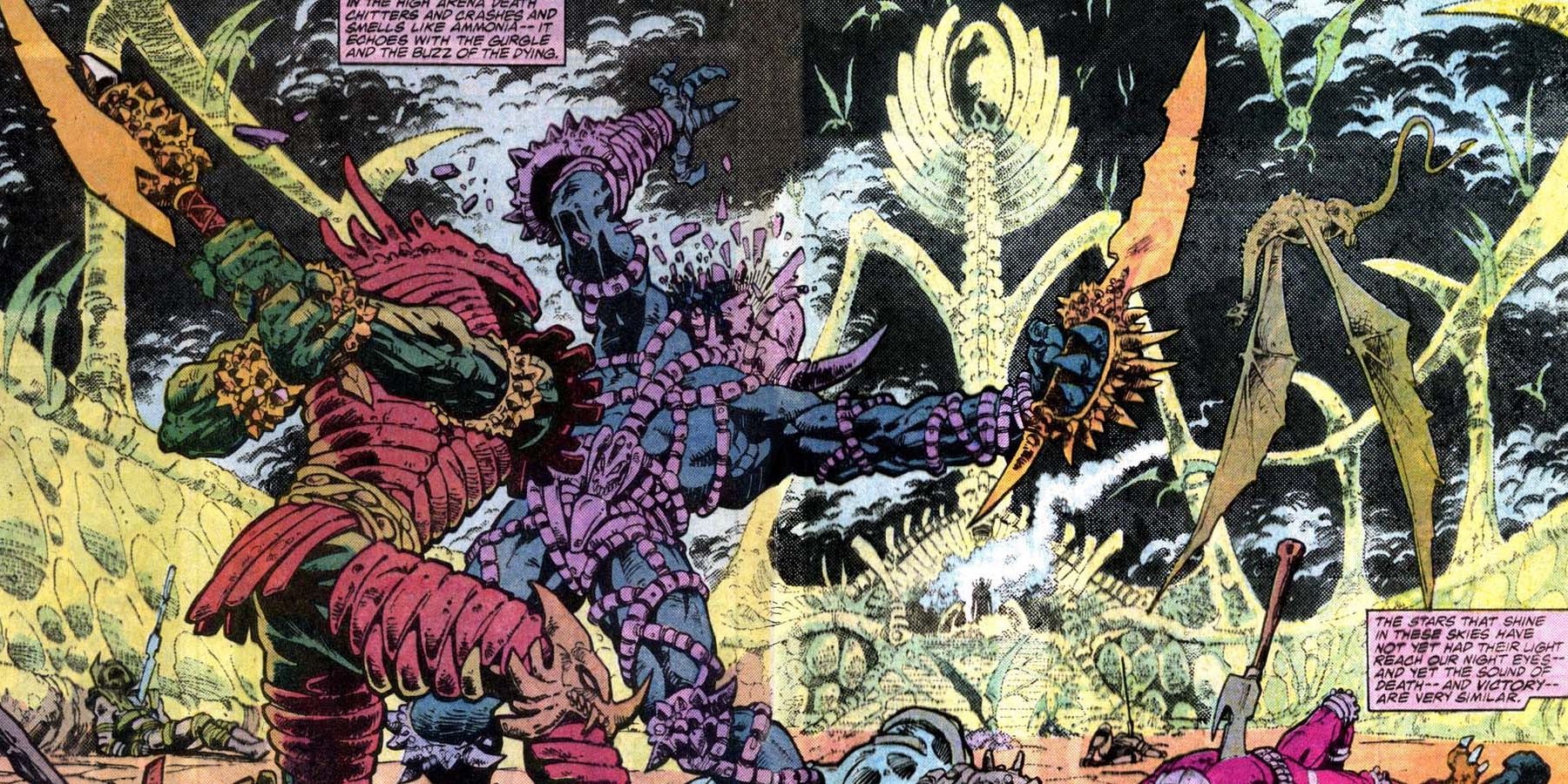Since the 1960s, Doctor Strange has reigned in the Marvel Universe as the 'Sorcerer Supreme'. A master of mystical arts, his storylines often evoke themes of psychedelia and Lovecraftian horror. But if the '60s and '70s were marked with such thrills, the '80s turned out to be a more introspective decade. Some of his best '80s comic issues focused on Strange's own humanity instead of his powers.
His friendship with peers like Wong and his relationship with the sorceress Clea proved to be pivotal plot points in some of these stories from the 1980s, as well as pitting him against major villains like Shuma-Gorath, who is likely to be a villain in the MCU. Apart from his main series, some of the special comics included a team-up with Doctor Doom and a scenario where he could decide the end of the world.
Updated on December 10th, 2021 by Darby Harn: Doctor Strange is set to play a major role in Spider-Man: No Way Home, and while that movie doesn't appear to lean on any comic book issues from the 1980s, it does dive deep into the concept of the multiverse, which some great Doctor Strange comics from the era do.
As Doctor Strange continues in the MCU in Doctor Strange In The Multiverse Of Madness, it's likely that the movie will draw on some key villains like Shuma-Gorath and concepts like magical realms and mystical dimensions. Some of his best comic book issues from the 1980s set the stage for his wild and weird MCU future.
Strange Tales #10
One of the most significant issues of the 1980s for Doctor Strange was Strange Tales #10, where the Sorcerer Supreme loses an eye in a major magical battle. The battle is even more dramatic because Doctor Strange is fighting Clea, perhaps his greatest love interest in the comics.
As the Sorceress Supreme of the Dark Dimension, Clea is one of the most powerful magicians in the Marvel Universe and is certain to appear in the MCU at some point, and this issue could provide some influence on how her story unfolds on screen.
Doctor Strange #58
Another key issue from the 1980s involves Clea and the Dark Dimension, setting up major elements of Doctor Strange's narrative arc through the decade. Issue #58 of the second volume of Doctor Strange sees Doctor Strange travel through the multiverse with his patented trippy visuals that have since inspired the MCU to check in on the progress of Clea in her bid to win control of the Dark Dimension.
Written by Roger Stern, the major writer of Doctor Strange in this period and one of the best Avengers writers ever, crafts a story that shows the scale and scope of the greater multiverse in the comics. It also builds on Strange and Clea's unique relationship.
Doctor Strange #68
Another of the best Doctor Strange comic book issues of the 1980s pits him against the Black Knight in what could be a preview of a future MCU installment. Comic book fans know Dane Whitman is the Black Knight and in issue #68 of Doctor Strange, he squares off against the Sorcerer Supreme in a colossal misunderstanding.
Doctor Strange uses magic to heal Whitman's magical steed, but the Black Knight thinks Strange is trying to hurt his winged horse. This leads to an epic battle involving the Black Knight's Ebony Blade and Strange's magic.
Doctor Strange #71
Doctor Strange #71 builds on the long-running conflict within the Dark Dimension, where Clea has been leading a rebellion against her uncle Dormammu, one of the most powerful supervillains in Marvel Comics. A huge battle plays out across a vast canvas through mystical realms that are awe-inspiring in a visual sense and one of the most epic issues of the period.
Doctor Strange goes to the Dark Dimension to help Clea and the rebels, who are fighting against Umar, who now rules the dimension. The complicated politics and epic magic of the issue are likely to play out in the MCU in some form someday.
Doctor Strange #75
Another potential MCU battle plays out in Doctor Strange #75, where the Sorcerer Supreme confronts Mephisto. This issue kicks off a major story arc with major consequences for the character that last deep into the 90s, making this one of the best issues of the 80s. Doctor Strange travels to Mephisto's realm to help the Fantastic Four.
Mephisto has captured Franklin Richards, the son of Reed and Sue, and Doctor Strange's intervention allows Franklin to display his extraordinary ability to defeat the all-powerful demon in a battle that may play out in live-action someday.
Doctor Strange and Doctor Doom: Triumph and Torment
Issue #75 wasn't the only time Doctor Strange traveled to Mephisto's realm. In the graphic novel Doctor Strange and Doctor Doom: Triumph and Torment, Doctor Strange agrees to team up with Doctor Doom, one of the most powerful Fantastic Four villains, for a journey to Hell. Even though Strange compromises his morals, he still empathizes with Doom as his mother is trapped in the dark realm.
The comic was written by Roger Stern and is a great example of Stern's ability to humanize Doctor Strange further rather than just focusing on his mystical powers. And if the writing wasn't enough, the vibrant art was done by Mike Mignola who enjoyed later fame with several Hellboy issues and Gotham By Gaslight. These aspects along with the unconventional team-up make Triumph and Torment a must-read for fans.
Marvel Fanfare #5
Marvel Fanfare #5 features a great story where Doctor Strange faces one of his most difficult choices in comics. Nicodemus West was the man behind Doctor Strange's ill-fated surgery that left his hands immobile. He's since become a villainous wizard with power lust. Strange and his romantic interest Clea confront West and Strange struggles to separate his personal feelings from the task ahead of him.
Apart from revealing Nicodemus' poor understanding of magic, the comic also shows the immense power that Strange and Clea hold. Their romance is also explored in a few pivotal moments of the story. The relevance of this Marvel Fanfare issue also lies in the fact that it is written by the legendary Chris Claremont who was already busy writing some of the best X-Men issues of the '80s.
Doctor Strange #55
"To Have Loved And Lost: from Doctor Strange #55 is one of the best issues of the '80s for exploring Strange's immense grief over the apparent death of Clea. The story has echoes of the character's episodes in What If...? as he teleports to an alternate reality. In this timeline, he never became Doctor Strange. In fact, this variant of Doctor Strange is a fictional character in this universe with his own comics and films.
The story becomes very meta and fans of Easter eggs in the MCU will enjoy hunting for them here. For instance, the alternate version of Doctor Strange in the comic is created by two comic book writers called Less Tane and Ted Tevoski (anagrams of Stan Lee and Steve Ditko). The merchandising of the character through films obviously foreshadows Strange's eventual presence in the Marvel Cinematic Universe.
Doctor Strange: Into Shamballa
Into Shamballa is another great one-shot from the 1980s featuring one of Doctor Strange's most spiritual and enlightening adventures as he's faced with a moral dilemma that tests his limits. After he's summoned to the Ancient One's Himalayan home, Strange finds that his former master has bestowed the gift of a dimension on him. When he enters this dimension called Shamballa, he's granted the power to end all of humanity and start all over again.
Into Shamballa is clearly a standout story for Doctor Strange given how it's much more than psychedelic thrills and magical villains. There's no clear distinction between a hero and a villain in the story. All that matters is Strange's own free will and the decisions that he would take along with it. Writers J.M. DeMatteis and Dan Green raised questions that continue to hold relevance even in modern depictions of Strange in media like Spider-Man: No Way Home, where he is willing to alter reality.
Doctor Strange #81
Doctor Strange #81 is arguably the best comic book of the 1980s as many storylines come to a head with major consequences. Allies Wong and Topaz are transported to the evil alien sorcerer Urthona's realm. Doctor Strange loses a lot as he has to destroy almost all of his mystical artifacts and knowledge to save the world from Urthona.
Instead of a happily-ever-after ending, "The Tongues Of Men And Angels" unleashes Strange's emotional side. Despite his confidence in his powers, he fails to save one of his closest associates, Topaz. The guilt would riddle him for the rest of his life even though Topaz assures him that his time had already come. And that moment alone marks a perfect finale to an iconic comic run.

